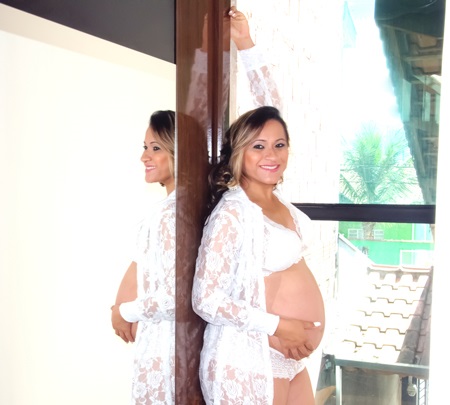In the modern world, the postpartum period for women is very facilitated, since many models of underwear not only make you feel comfortable, but also perform a protective function. One of these models is a nursing bra, the purpose and features of which we will consider in more detail.

Why is it necessary?
In the postpartum period, the body is most stressed, including parts of the body. The greatest load is on the mammary glands, since they are filled with milk and become larger, the skin has to stretch and the chest may lose shape and sag.

The classic bra for feeding on the bones, first of all, is a powerful support for the breast, helping to protect it as much as possible from the loss of experienced forms. A wide line with a fastener allows the young mother to feel as comfortable as possible, does not cut into the skin and perfectly fixes the breast.



As for its direct use, a special bra model is necessary to facilitate breastfeeding. Due to the fact that the breast can be easily and quickly exposed or removed from a bra cup, feeding a child no longer seems so difficult and occurs in more comfortable conditions.

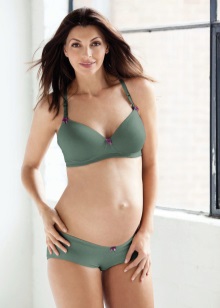

Buying such a product costs immediately before childbirth, as the breast swells and increases, and a pre-purchased product can become small and turn into a waste of financial resources.
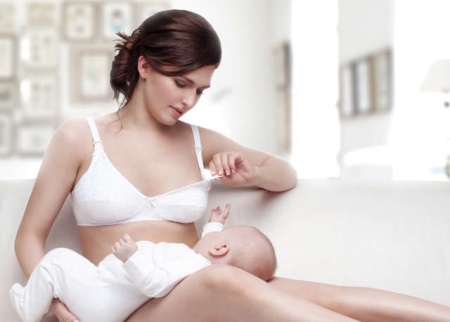
If you have planned to buy a nursing bra in advance, you should first consult with the doctor who is conducting your pregnancy, clarify how much volume is possible and purchase a larger product.
But this only applies to bras with fasteners and fixed cups. Models of T-shirts and tops are made of special elastic material, which is quite easily stretched, so increasing the volume of the chest will not be a problem.
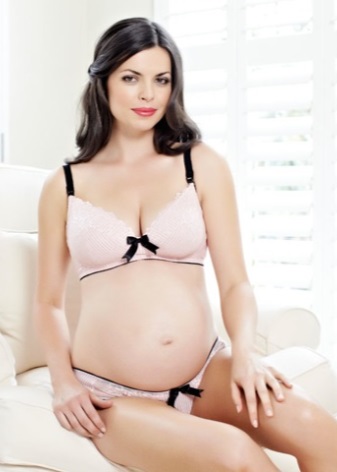

How does it look and how is it different from usual?
Maternity bras are much wider than usual, since the postpartum breast needs much stronger support. And the parts of the cups are unbent and attached to buttons or buttons for easy exposure of the necessary part of the chest and easier feeding.

Other models differ from the usual bra in that they are made of elastic fabric in the form of tops or T-shirts, which are well suited for home use or for night feeding.



A distinctive feature is the material from which they make bras for pregnant women. It should be soft tissue, pleasant to the body, with soft hidden seams that do not allow the product to rub the soft skin of a young mother.
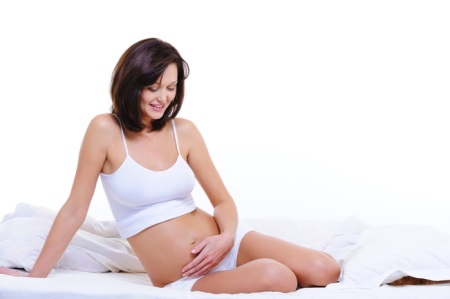
Models
There are several varieties for breastfeeding bras, as well as regular ones, because not a single lineup is limited to just one kind. Each young mother has her own habits, which is why she makes her choice based on personal preferences, trying to get the most comfortable product for herself.



Let us consider in more detail each of the types, what advantages they have, and what disadvantages can cause a rejection of the model.
Bra - Top
This bra model is a top like a sports model, made of soft cotton or knitted fabric. May have continuous wide or narrower adjustable shoulder straps.
The top model can have a V-shaped neckline, then the baby is fed by moving tissue on one of the breasts.


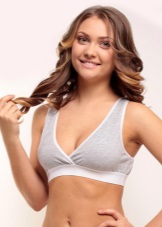

Another model of the top is a product from a strip of fabric with a spare front part, which is attached to special hooks.
This type of bra has a lot of advantages, including incredible comfort when wearing and using, easy and quick breast removal, nice texture of the material.
Among the shortcomings, one can note only the absence of elastic bowls, which is why the breast is in a slightly "hanging" position, which can negatively affect its shape.
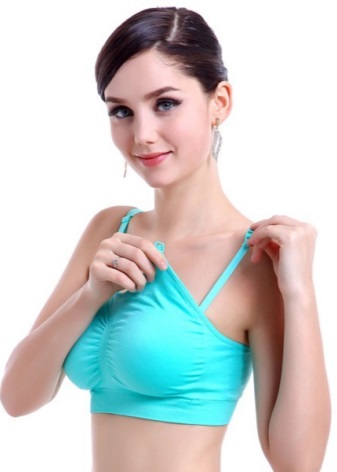

Tank Top - Bra
A bra of this kind has a cut in common with the top, and the distinguishing feature is the length, which, as a rule, reaches the waist line or lumbar region.

Such T-shirts are not very practical for use in everyday life, because due to the lack of a support line and bones, the breast is in a "hanging" state.



But this model is great for sleeping and greatly simplifies feeding the baby at night.


Seamless
This model is perfect for young mothers with delicate skin, which requires reverent treatment and appropriate care. Such a bra does not rub and does not create uncomfortable sensations.
A model without seams can be made both in the form of a classic bra, and in the form of a top or shirt for feeding.

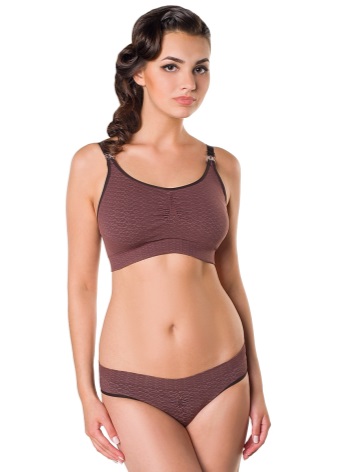
In addition, the classic seamless nursing bra allows you to wear tight evening dresses on top of it.





On the bones
The underwired model is the most aesthetic option because it maintains the shape of the breast without making it sag.
The model is equipped with detachable elements, allowing to expose part of the breast for feeding. The element is attached to buttons or inconspicuous buttons.


Some models of underwired bras designed for feeding have a push-up effect, due to which the breast looks more appetizing and seductive.
A distinctive feature of the underwire model are cups with foam rubber and different options for fasteners - back or front.


Brands
Properly selected postpartum underwear plays an important role in the process of feeding a child. Many manufacturers praise their product, focusing on the use of high quality materials. Let us consider in practice whether this is justified and the cost of postpartum nursing bras.
Emma jane
Many models of nursing bras are presented in the collections of this manufacturer. In addition to the lines, the models are also divided into day and night, each of which has a number of features.


In addition, the bras of this brand have a division depending on the shape of the breast, so that in the postpartum period, the young mother feels as comfortable as possible. The bodices are made of natural fabrics, have wide straps and the most convenient hook and loop fasteners.



The cost of such bras varies in the area of 2,000 - 5,000 rubles, which is quite acceptable and justified.
As for the brand itself, it has been on the market for young mothers for a quarter of a century, delighting customers with comfortable and high-quality products.


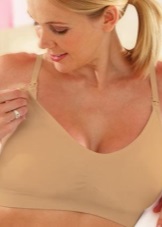
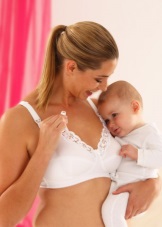
Mom Comfort
A line of excellent nursing bras, presented mainly by underwire models that perfectly support the breast, helping to maintain its shape after childbirth.

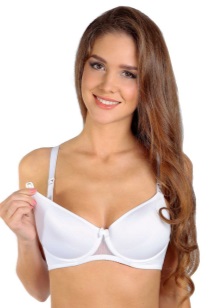

The bras of this manufacturer are not only comfortable, but also very attractive in appearance, have various decorative elements in the form of printed colors and lace inserts.



Mom comfort is a domestic manufacturer, the cost of products of which is in the range of 1,000 - 2,000, depending on the model.
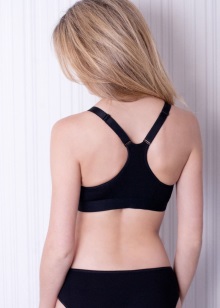


Medela (Medela)
The Swiss company, whose specialization is the production of products and other goods for pregnant and lactating mothers, began its existence in the distant 1961.

The brand has established itself as a high-quality manufacturer of luxury goods, and high quality is achieved and maintained through regular innovative research.
The cost of these products is in the range of 2,000 - 5,000 rubles.


Bliss
Another domestic brand specializing in the manufacture of quality products for pregnant women and young mothers was founded in 1998 in the city of Novosibirsk, and a little later settled in the capital.

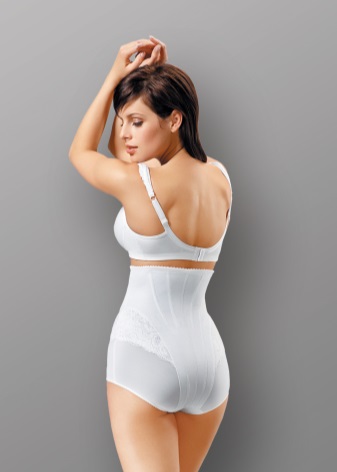
Collections of nursing bras are surprising in their breadth; there are underwire models, tops and T-shirts made from good quality materials and providing maximum comfort to a young mother.




The cost of such products is from 1,500 to 4,000 rubles, depending on the model.
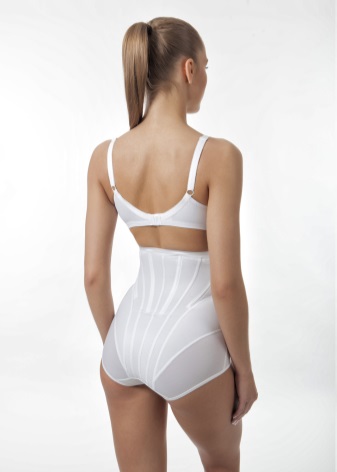

Anita
The brand, which represents a huge catalog of products for pregnant women, includes models of nursing bras.
The pricing policy of this company is quite flexible, you can find a model at a cost of up to 1,000 rubles, and a cost of about 4,000 rubles.



Our mother
The Ural company producing pregnant and lactating goods began its existence relatively recently, but quickly gained popularity.
Products are widespread due to their sparing pricing policy. The thing is that when using materials of rather good quality, the cost of bras varies in the area of 500 - 600 rubles.

How to choose?
For some women, the choice of a postpartum bra can be a big problem, because if you are neglected, you risk getting uncomfortable underwear that will crush and restrict movement. Let us consider in more detail how to choose a good bra for breastfeeding, what to look for and what nuances are especially worth considering.


Material
During pregnancy, the parameters of the female figure change, so you should not base your choice on the usual bra size, you need to measure these parameters and choose them.
The second, but no less important criterion is the quality of the material. The fact is that in the postpartum period, the skin of the breast is especially sensitive and susceptible, therefore, the fabric from which the product is sewn must be of the highest quality.

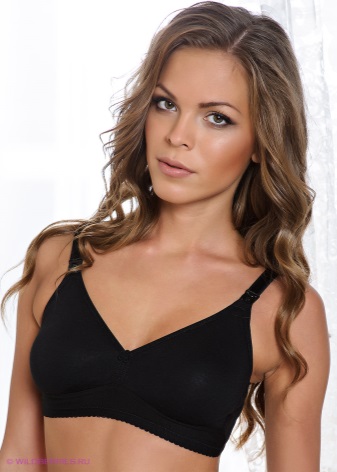
Cups
First of all, for the quickest and most convenient completion of the feeding process, it is necessary that the cups of the bra quickly open and close. It is advisable that a large part of the breast is exposed, for closer contact of the mother with the baby during feeding.


It is best that the clasps on the cups are not too tight, if these are buttons, and easily fit into the loops, in the case of buttons. There are models with zippers, but they are not very convenient.

In addition, the cup volume should be such that specialized inserts can be inserted. Some cups are equipped with special pockets.

Sizing
Determining the right size is an important point in choosing bras, but not every girl knows how to do it correctly so that all the parameters and features of the figure are taken into account.


The first step is to measure the girth of the chest itself, focusing on the most convex parts. In this case, the centimeter should be in a level position and should not be twisted, as this can distort the result.


Next, you need to measure the circumference of the body in the area under the chest, taking into account the even position of the centimeter tape.
Size chart
To choose a bra as accurately as possible, it is not enough just to measure the parameters of the figure, you also need to compare them with the dimensional grid to calculate the appropriate size. All sizes corresponding to certain parameters are indicated in this table:
|
Chest circumference (cm) |
62 to 66 |
From 67 to 71 |
72 to 76 |
77 to 81 |
82 to 86 |
87 to 91 |
92 to 96 |
97 to 101 |
From 102 to 106 |
107 to 111 |
112 to 116 |
117 to 122 |
Cup size |
|
Chest circumference (cm) |
76 to 78 |
81 to 83 |
85 to 88 |
91 to 95 |
96 to 98 |
101 to 105 |
106 to 110 |
111 to 115 |
116 to 120 |
A |
|||
|
79 to 81 |
84 to 86 |
89 to 91 |
94 to 96 |
98 to 102 |
103 to 107 |
108 to 112 |
113 to 117 |
118 to 122 |
123 to 127 |
128 to 132 |
From 133 to 138 |
B |
|
|
81 to 83 |
86 to 88 |
91 to 93 |
96 to 98 |
101 to 103 |
106 to 108 |
111 to 113 |
116 to 118 |
121 to 123 |
From 126 to 128 |
131 to 133 |
136 to 138 |
C |
|
|
83 to 85 |
88 to 90 |
93 to 95 |
98 to 100 |
103 to 105 |
From 108 to 110 |
113 to 115 |
118 to 120 |
123 to 125 |
128 to 130 |
From 133 to 135 |
138 to 140 |
D |
|
|
90 to 92 |
95 to 97 |
100 to 102 |
105 to 107 |
110 to 112 |
115 to 117 |
120 to 122 |
125 to 127 |
130 to 132 |
135 to 137 |
140 to 142 |
DD, E |
||
|
91 to 93 |
96 to 99 |
101 to 104 |
108 to 109 |
111 to 114 |
115 to 119 |
121 to 124 |
From 126 to 129 |
131 to 134 |
136 to 139 |
140 to 144 |
F |
||
|
93 to 96 |
98 to 101 |
103 to 106 |
109 to 112 |
113 to 116 |
118 to 121 |
From 122 to 126 |
129 to 131 |
134 to 136 |
139 to 141 |
144 to 146 |
G |
||
|
Bra Size |
65 |
70 |
75 |
80 |
85 |
90 |
95 |
100 |
105 |
110 |
115 |
120 |
|
|
Women's Clothing Size |
34 to 36 |
36 to 38 |
38 to 40 |
40 to 42 |
42 to 44 |
44 to 46 |
46 to 48 |
48 to 50 |
50 to 52 |
52 to 54 |
54 to 56 |
56 to 58 |

This table provides the most detailed and accurate data with which you can easily determine which bra is right for you.
But, as already mentioned, the choice of a bra for breastfeeding should be done in the postpartum period or in the last months of pregnancy, since along with a change in the hormonal background and the appearance of milk, the shape parameters change, so a pre-selected product may simply not work.



What material is made of?
Nursing bras differ not only in models and sizes, the differences also relate to what material the product is made of. Each of the fabrics has its own characteristics and functional features.

- Cotton. Some models, usually of the highest quality, are made of high-quality cotton material that is breathable, while allowing the skin to breathe. But such a product may not be very practical, since it has low wear resistance and quickly loses its original appearance, and at the same time many functional features.



- Knitwear To create more durable and functional models, high quality jersey with the content of cotton fibers, which provide the material with “breathing” properties, is used. Knitwear is more elastic, therefore, it repeats the outlines of shapes and perfectly "sits" on the chest.

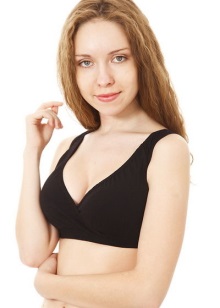

- Microfiber. Among the obvious advantages of this material, a rather low cost can be noted, which makes nursing bras more affordable for any budget. Also, the material stretches perfectly, and the bra supports the chest well.
But against the background of one big drawback, all these advantages fade and become insignificant, because microfiber is not a natural material, therefore it does not allow the skin to breathe and can cause discomfort, and sometimes even an allergic reaction, to too sensitive skin.


- Polyamide. This material is quite common, but undesirable for the postpartum period, because it has a synthetic origin. But recently, in the manufacture of polyamide, hypoallergenic fibers have been used, which makes it quite suitable for sewing bras for feeding.
In addition, postpartum underwear made of polyamide is good because the models have high wear resistance, elasticity and wear resistance.

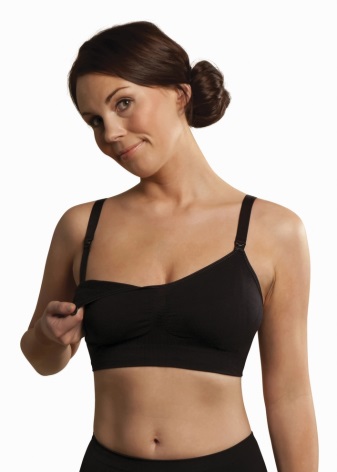
What are liners for?
Many postpartum bras are equipped with additional elements, such as inserts, which are sometimes called pads. Let us consider in more detail what it is, what functions the inserts perform and why they are needed.

The liners are a kind of thin reusable foam paddings that have a high degree of absorption. The inserts are inserted into the bra, snugly pressed to the chest, and sometimes the product is equipped with a specially designated pocket.


Some consider liners to be a waste of finance, but in fact, based on hygiene issues, postpartum liners are more likely to be necessary because they solve the problem of “runaway” milk.
The fact is that it often happens that milk leaks from the chest and when wearing an ordinary bra, wet spots appear on the clothes, which is not only not hygienic, but it looks somewhat unaesthetic.

To prevent the appearance of such "wet" traces, it is these inserts that perfectly absorb all the chest discharge. In the case of strong getting wet, they can be easily replaced with new ones.

Since this part is reusable, there is no need to purchase a large number of inserts, it is quite possible to do with three to four pairs.
Reviews
When analyzing the numerous reviews of young mothers, the uniqueness of the postpartum bra becomes obvious, because almost no girl can do without such a product during this period.
Only about 1.5% of all women consider a nursing bra a waste of money and adhere to the old methods of feeding, while wearing a completely ordinary, casual bra.



About 17.5% prefer pure cotton bras, but in this case you have to purchase items with a fairly frequent frequency, because, as already mentioned, the cotton wears out quite quickly.
About 20% prefer microfiber products, not paying attention to the fact that the material is synthetic and can cause a reaction. Quite a few women are attracted by the low price and high degree of strength and wear resistance.
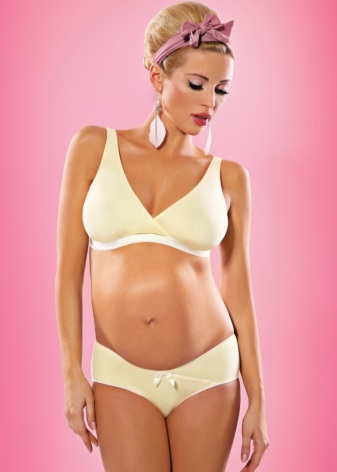

But the bulk - 51%, prefer postpartum bras made of hypoallergenic, durable polyamide. Such products will last a long time, being in good shape, therefore, with careful use, replacement may not be required.
In addition, when analyzing reviews, it becomes clear that the vast majority of women consider the use of bra inserts as a necessity.


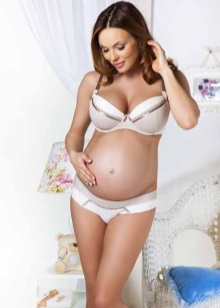


Also, many young mothers prefer night models and pitted bras as a home option.
